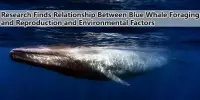The mysterious disappearance of ancient lions and bears from parts of North America for a thousand years or more prior to the last Ice Age, according to an international team of researchers led by the University of Adelaide, is likely due to a change in the climate.
The researchers sequenced DNA from fossils of cave lions and bears from North America and Eurasia in a study published in Molecular Ecology to better understand the timing and drivers of their past movement between continents.
“There’s a common perception that ecosystems tend to remain stable over thousands or even millions of years, outside of mass extinctions or direct human interference,” said co-author Dr. Kieren Mitchell of the University of Adelaide’s Australian Centre for Ancient DNA.
“That is not always the case, as evidenced by our research into the fossil record. Previous research has shown that brown bears (or grizzly bears) vanished from some parts of North America thousands of years before the last Ice Age. They later reappeared, walking from Russia to Alaska across the Bering Land Bridge – possibly at the same time as people moved across the Bridge into North America. However, no one knows why they vanished in the first place, which is why researching this event is critical.”
There’s a common perception that ecosystems tend to remain stable over thousands or even millions of years, outside of mass extinctions or direct human interference. Overall, these findings show how changeable past ecosystems were, as well as how the abundance of different species can be very sensitive to changes in climate.
Dr Kieren Mitchell
A key finding of the new research is that cave lion from the same area went extinct more than once, disappearing and reappearing thousands of years later, around the same time as bears. There is no evidence that people were responsible for these brief disappearances, and cold ice age conditions were not to blame.
“Rather, it appears to be a smoking gun pointing to some kind of change in their ecosystem,” Dr. Mitchell explained. The extinction of lions and bears in parts of North America (specifically Alaska and the Yukon Territory) corresponds with evidence of widespread vegetation change in the region. Warm temperatures prior to the last Ice Age, according to the researchers, may have caused a change in the abundance of different types of plants, which then impacted herbivores and their predators (like bears and lions).
A key finding of the new research is that cave lion from the same area went extinct more than once – thousands of years before their final extinction, they had disappeared and reappeared, following the same pattern as the bears. There is no evidence that people were responsible for these brief disappearances, nor that cold Ice Age conditions were to blame.

Colder temperatures prior to the last Ice Age may have reversed this change, making the area more hospitable to herbivores and, as a result, their predators. “Overall, these findings show how changeable past ecosystems were, as well as how the abundance of different species can be very sensitive to changes in climate,” said Dr. Mitchell.
“The shared patterns of dispersal between lions and bears correspond with the presence of the Bering Land Bridge that connected Russia and Alaska during the Ice Ages,” said lead author Dr. Alexander Salis of the University of Adelaide.
“The Bridge was periodically exposed and inundated by changing sea levels during the last few Ice Ages, allowing intermittent dispersal of animals and people between continents and changing the faunal composition.” While many people believe that species arrive in a region and stay there, we show that the past was much more dynamic, involving multiple waves of dispersal and local extinctions in this case.”
As it turns out, the timing of these bear and lion extinctions in parts of North America coincides with evidence of a widespread shift in the region’s vegetation. According to the authors, warming temperatures prior to the last Ice Age may have changed the composition of plants, disrupting the flow of the food chain and reducing the population of herbivores on which bears and lions preyed.
As the Ice Age approached, cooling temperatures may have reversed this change, making the area more hospitable to herbivores and their predators.
“Overall, these findings show how changeable past ecosystems were, as well as how the abundance of different species can be very sensitive to changes in climate,” Mitchell says.
















